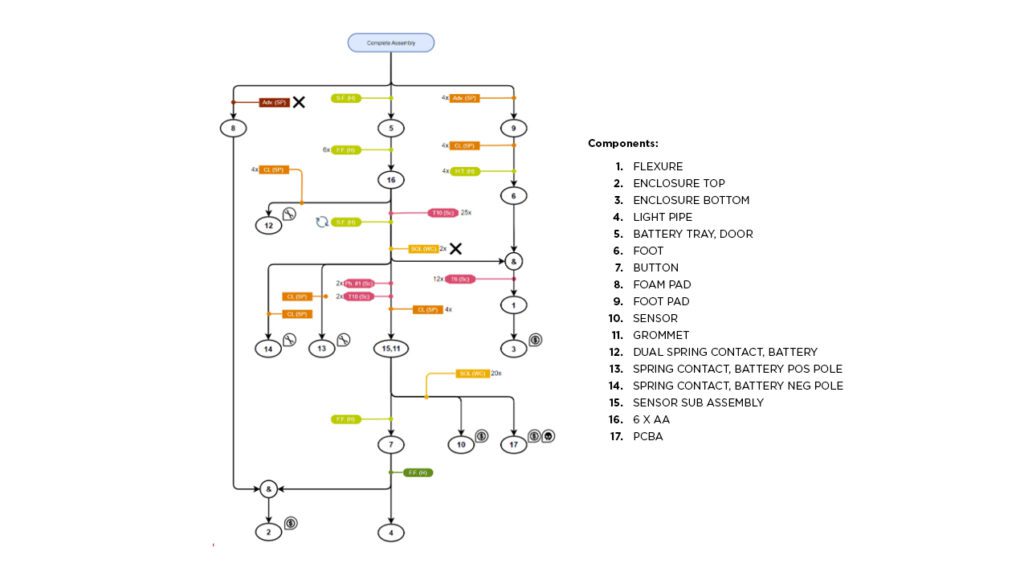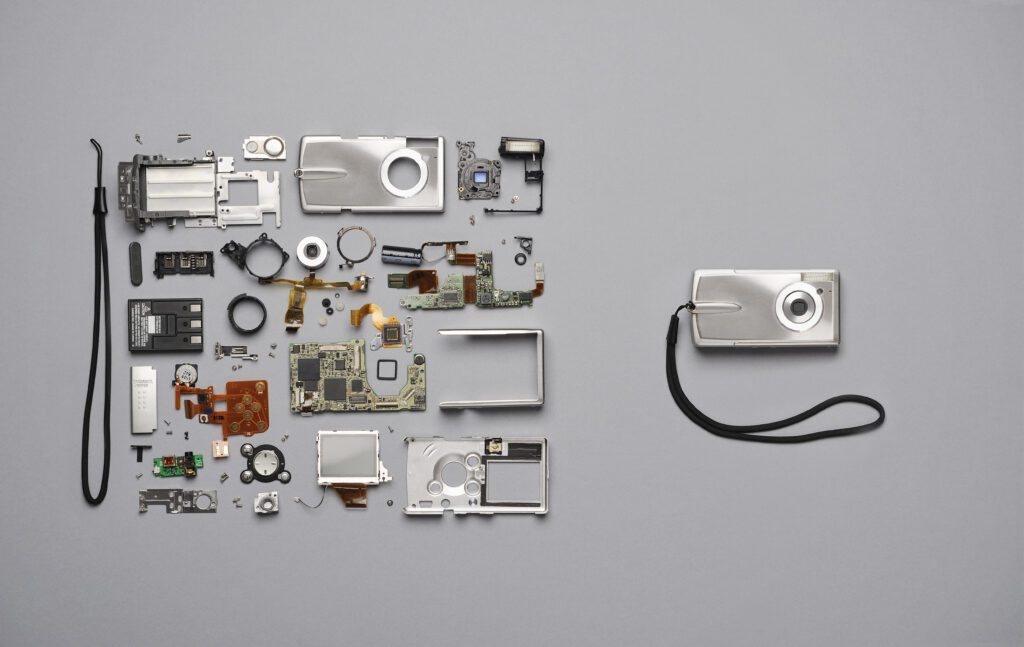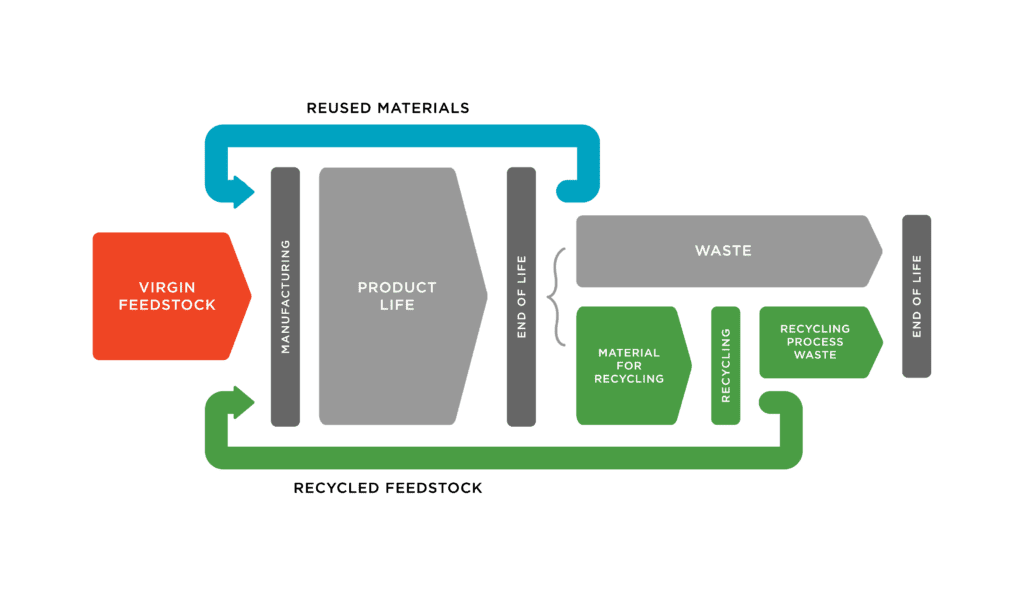As engineers, we are data-driven and always looking for ways to optimize product performance, reliability, and cost. This includes decisions that impact product circularity. Like any other product requirement, we rely on assessment tools that yield objective and quantifiable data to verify performance. At Synapse, we have adopted, adapted, and customized assessment tools for circular design, which are used in each design iteration to evaluate the circularity of a product and to compare concepts for their circularity credentials.
The first tool is disassembly mapping, a structured process that maps out the disassembly of a product down to its component parts, allowing designers to identify the disassembly path to access components that are of high value or have a shorter service life. Scoring and qualitative assessments are based on the number of disassembly steps, tools, and disassembly time required. Designers can use these scores to reduce the number of actions or tools required to access the target components, which makes it easier to access key components for repair, refurbishment, reuse, and recycling.
In one example of a consumer electronics product, using a disassembly map allowed improvements to be made in a single redesign cycle by:
- Removing destructive disassembly processes so anything that can be taken apart can also be reassembled
- Reducing the number of disassembly steps to access key components
- Reducing the number of tools required for disassembly by unifying fastener types
- Reducing the total number of fasteners to increase disassembly speed


The second tool we use is a repairability assessment, which we have adapted from the French Repairability Index that scores products’ repairability on a scale of 1 to 10. This tool allows quantitative comparison of different product concepts, as well as all other products in the repairability index database.
The topics covered in this assessment also act as an effective checklist to ensure all aspects of a product’s repairability are addressed, including:
- Availability and cost of spare parts
- Quality and availability of repair documentation
- Ease of disassembly and access to key components
- Ability of the product to provide diagnostic information to the user
When using this tool on a consumer electronics product, it scored 4.9 / 10, a score that’s indicative of significant opportunities for improvement. In reviewing the scorecard, it was easy to see the biggest opportunities to increase the score were to improve public access to the product support documentation and make the spare parts available to consumers.

Finally, we use a pair of tools to evaluate the flow of materials used in a product, focusing on the feedstock used and the destination of the materials at the end of life. These tools, the End of Life scorecard and the Material Circularity Indicator (adopted from the Ellen MacArthur Foundation), allow for the quantification of the amount of materials that are in a circular system, and those which are still in a linear system and end up in landfill.
Synapse has customized these tools to evaluate material flows not only by material mass, but also by embodied carbon emissions in the materials. This gives design teams flexibility to prioritize implementing circular design strategies for materials by either the mass of materials or by the potential environmental impact of the materials. For example, in a typical wearable product, the plastic housing may be the heaviest component, which would typically be prioritized for circular material flows, but the electronics have a larger carbon footprint, which makes the implementation of circular systems for the electronics more valuable. These tools highlight the split of materials in linear and circular flows within a system and can be used to compare system concepts to allow for the selection of the concept that is more circular.

The use of these tools takes the subjectivity and human error out of the circular design process, with objective, data-based decision-making ensuring the best design decisions are made. In conjunction with our Sustainable Design Process and systems thinking principles, we can create more sustainable products and systems.



